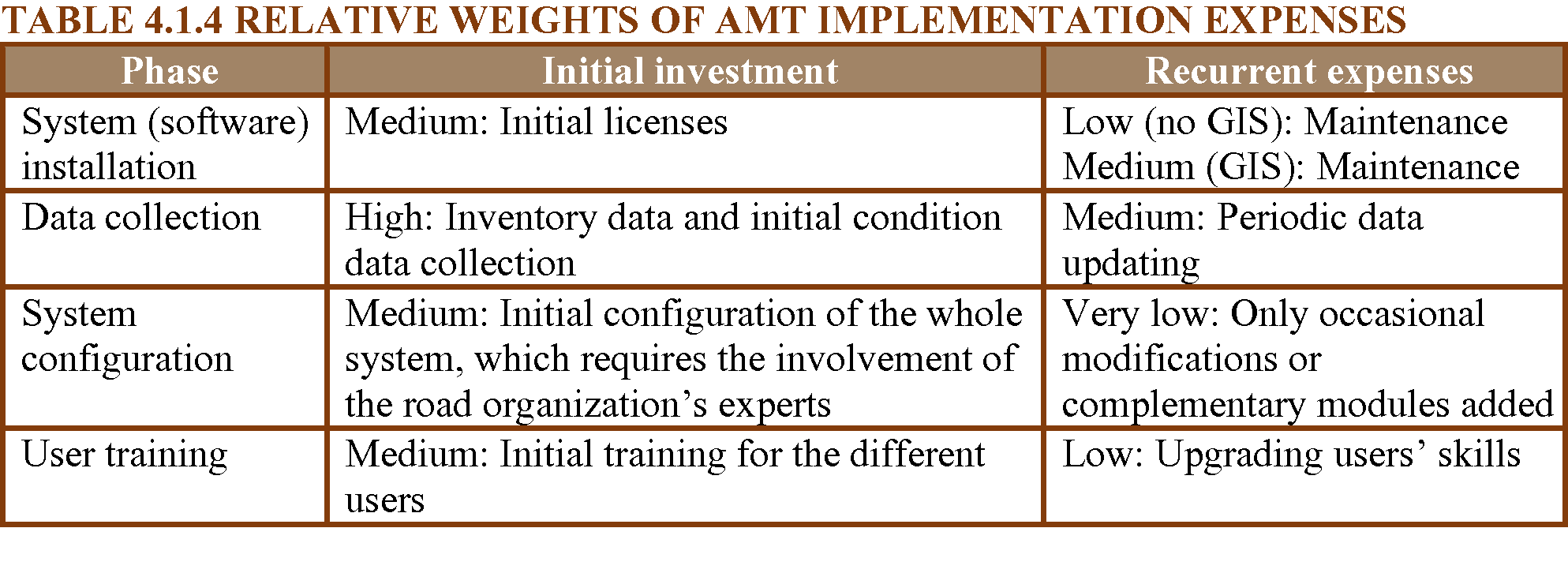
Asset Management Manual
A guide for practitioners!

Asset Management Manual
A guide for practitioners!
Buying an AMT may be expensive. Without up-to-date data or trained users, the AMT will be of no help for the road organization. Therefore, the implementation of an AMT in a road organization should be supported by a complete business plan that sets out the investment required and the benefits. Importantly, the organization must also be able to fund a data collection program over the lifecycle of the system. Without this, the AMT will not be sustainable.
The system should consist of a road database plus a set of data interpretation modules, as described above. The cost of initial licenses, generally a lump sum, must be funded. Sometimes the database display functions are below the level specified by the road organization. In that case, the road organization must complete the database with GIS, and the cost of the license(s) must be added to the lump sum. Moreover, in most cases the proposed software includes a maintenance option, which implies a recurrent expense that has to be funded as well.
The system is run using inventory and condition data. These data must be sufficient, reliable, and up to date. A significant amount of work is required to initialize the process (mainly gathering inventory data) and collect condition data recurrently (possibly annually) on site. For this periodic collection, different schemas exist. For instance, some road organizations collect data on the whole network every “n” years, while others collect data on a part (1/N) of their network every year. Some road organizations employ their own staff to collect data, while some others contract the data surveys to specialized companies. In all cases, the implementation of an AMT requires an initial investment in the collection of inventory and condition data, plus a recurrent budget for collecting updated data. This investment must be considered in the business plan.
The most important effort when installing an AMT involves the configuration of the analysis modules. From this point of view, each AMT is different. The context (climate, traffic, road construction, road maintenance) varies from one road organization to the next. Thus, the professional expertise, experience, and even culture are different from one country to the next. The configuration of the AMT involves collecting the local expertise, experience, and culture to formalize these factors and incorporate them into the software. This may require a significant amount of time, but the success of the installation and the later application of the system strongly depend on the quality of this configuration. The configuration phase can gradually turn into a training phase for the future users of the system. Subsequently and periodically, some additional training can be proposed to upgrade the AMT users’ skills.
Therefore, the decision to implement an AMT must always be supported by the production of a business plan that will identify the sources of the initial and recurrent funding. Table 4.1.4 illustrates the relative weight of the expenses.
